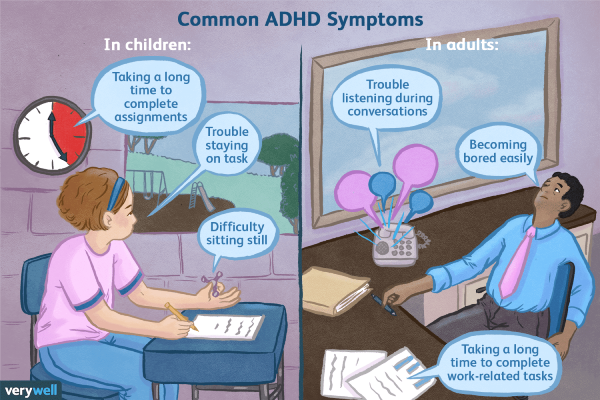


Attention Deficit Hyperactive disorders (ADHD) is one of the most common neuro developmental disorders of the childhood. This is mainly diagnosed in children between the ages 6 and 12 years.
Though we see many of the above symptoms even in a normal kid, these symptoms disappear with age in most of them. ADHD kids continue to grow with these symptoms; the worst part being, these symptoms turn out to be more severe impacting their mental, intellectual and emotional growth.
Genetics seem to play an important role in causing ADHD. Apart from genetics other causes include:
After a thorough diagnosis, children below the age of 6 years are treated with behavioural therapy along with parent and teacher training. This comes as the first line of treatment.
For children aged more than 6 years, a combination of CBT and Medicines (Stimulants) are provided to aid in recovery, since studies have shown these to be effective. “According to the American Academy of Pediatrics (AAP), 80 percent of the children who use stimulant medications, either alone or combined with behaviour therapy, increase focus and decrease impulsivity 1. . Larger number of children treated with this combination showed increased self-esteem, improved relationships with family, friends and teachers.
The behavioural therapy for children is said to start soon after the diagnosis. This also includes training for parents and teachers at school in terms of behaviour management of children up to 12 years of age. Even adolescents are provided with training. It is always advisable that both the parent and the teacher are involved in closely monitoring the child in terms of changes in the behaviour.
The goals of this CBT are to reinforce positive behaviour in kids. Parents and teachers set desirable goals and expectations for the child along with time goals. The child will be rewarded every time they display desired behaviour or expectation. The unwanted behaviour is discouraged.
For children who are intolerant to Stimulants or do not demonstrate the desired effect of stimulants, are treated with non-stimulant medications such as tricyclic anti-depressants which are generally consumed as an off-label prescription.
To enhance the emotional development of kids, researchers have found that kids fed with a diet rich in proteins, high on veggies, fruits and lean meat showed a 25%-35% reduction in experiencing depression and an improved emotional health. Protein-rich food actually kept them more alert.
If any kid shows signs of ADHD, please take them or refer them immediately to a child specialist or a psychologist or a developmental paediatrician, so that they get timely care and treatment.